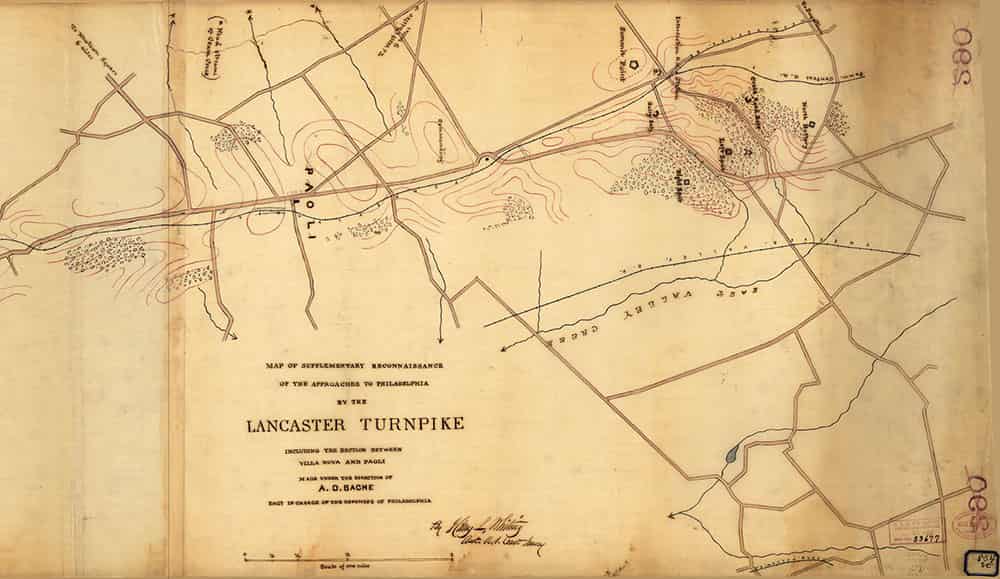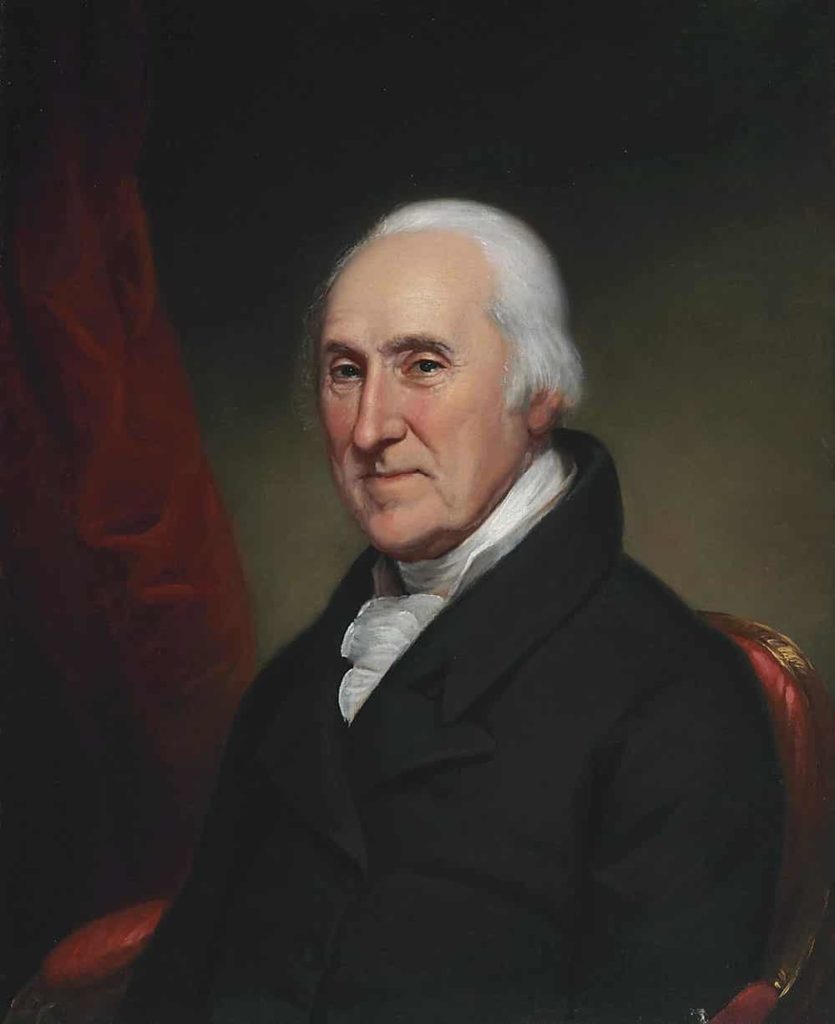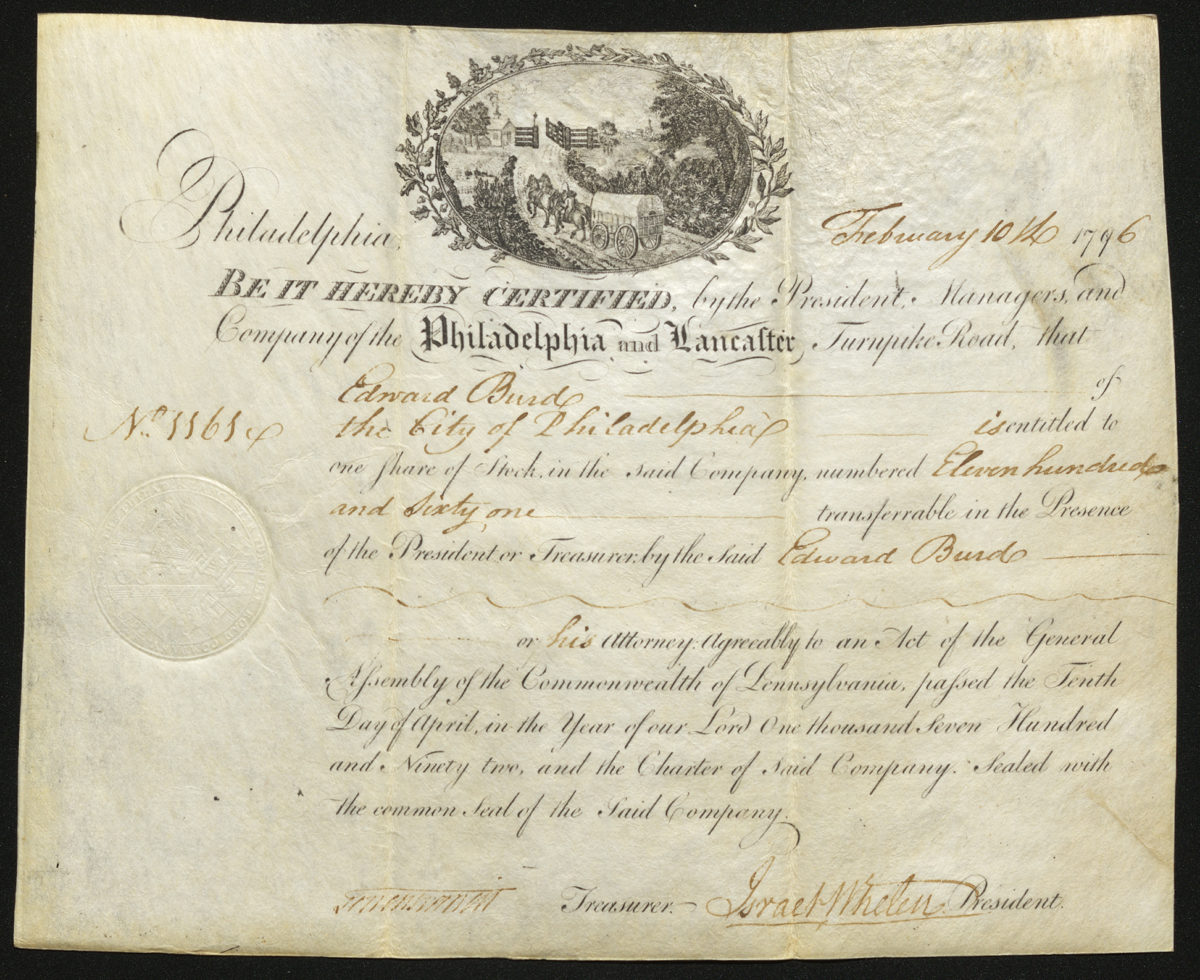
Early American Infrastructure and the Turnpike Road
An 1816 Senate report noted that it cost as much to ship a ton of goods 30 miles overland in the U.S. as it did to ship them 3,000 miles to Europe due to America's underdeveloped infrastructure. The Philadelphia and Lancaster Turnpike Road facilitated an early entrepreneurial solution as the first of its kind in the U.S.
Header Image: Map of approaches to Philadelphia; courtesy Library of Congress [1].
“Whatever... impedes the intercourse of the extremes with the centre of the Republic, weakens the union... Let us then... bind the Republic together with a perfect system of roads and canals. Let us conquer space.”

Edward Burd, officer in the American Revolutionary War; courtesy Christie’s via Wikimedia Commons
The Philadelphia and Lancaster Turnpike Road was the first long-distance private turnpike constructed in the United States, with construction completed in 1794. It was also the fourth company ever chartered in the fledgling state of Pennsylvania in 1792.
Before becoming the toll highways we recognize today, turnpikes were toll roads that had been graded and paved with gravel; the term “turnpike” originated from the ‘pike,’ a long pole across the road that served as a tollgate.
In the vignette on this stock certificate, you can see a horse-drawn covered wagon approaching a toll house with an open gate. A similar image can be found in the company’s seal embossed on the left center portion of the certificate. The vignette is also significant because this document dates from 1796, making it one of the earliest stock certificates to feature a vignette—the idea behind the vignette being to illustrate one’s investment.
After the American Revolutionary War, there was a need to invest in infrastructure improvements in the United States. In Pennsylvania, the lack of a road system limited economic development, so a turnpike between Philadelphia and Lancaster was proposed. The government knew it could not afford the costs of building it, and instead, chartered the private Philadelphia and Lancaster Turnpike Road Company in 1792. Stock certificates like this one were sold to finance the construction of the turnpike, and excitement over the project led to a speculation mania.
After the turnpike opened, it was successful until wagons were overtaken by the technologies of the railroad and canal systems. The turnpike fell into disrepair until the rise of the automobile and eventually was incorporated into the transcontinental Lincoln Highway which also passed through Reno. Today it is part of the Pennsylvania State Highway System. (Scroll down to continue reading about the Philadelphia and Lancaster Turnpike Road below)
This stock certificate passed through several hands of importance. Edward Burd, original owner of the stock, briefly served as a Major in the colonial forces during the American Revolution until being captured and falling ill. Israel Whelen, who has signed as the president of the company, served as a Captain and financial agent during the Revolution despite growing up in the Quaker community. He was one of the first directors of the First Bank of the United States, and the third president of the Philadelphia Board of Brokers. He served as the first president for the Turnpike Company and was later replaced by politician William Bingham.
The reverse side of this certificate also lists the stock’s transfers. At one point it was owned by Thomas Biddle, a hero of the War of 1812. Biddle is most famous for his feud with Congressman Spencer Darwin Pettis, which culminated in Biddle’s death in a duel in 1831. Animosity between the two had grown after Pettis criticized Biddle’s brother Nicholas, who was serving as the president of the troubled Second Bank of the United States at the time.
 University of Nevada, Reno
University of Nevada, Reno
